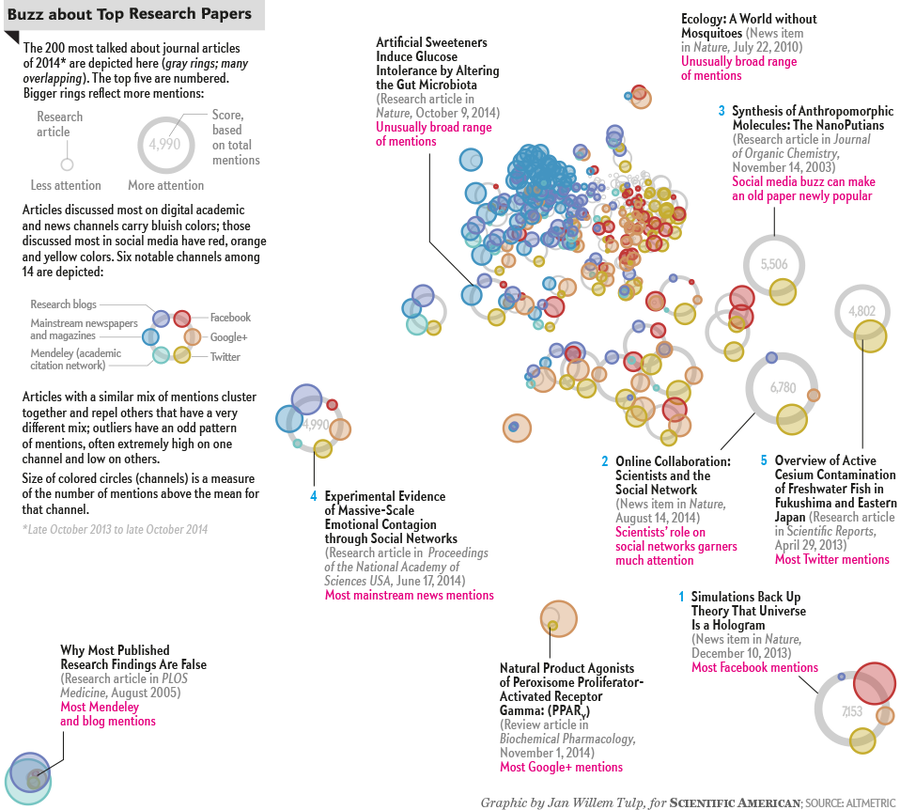Hundreds of research papers are published every day worldwide. But which articles are most discussed and in which circles? To find out, Altmetric in London traced how often papers were noted in 14 digital channels, ranging from the serious (5,000 research blogs and Mendeley, an academic citation network) to the trendy (Twitter, Facebook) and everything in between (including 1,000 news outlets). Altmetric poured data for 2014 into an algorithm that created scores; the top 200 articles are mapped here. The results reveal a divide: the papers discussed most in serious channels (bluish circles, which trend to the left of the page) are different from those discussed most on social networks (red, orange and yellow, which trend to the right). (Scientific American is part of Macmillan, which is an investor in Altmetric.)

High-ranking subjects on academic sites included flaws in research, human cells, how the brain works and medical advances. Social media favored papers on scientific errors, the solar system and the universe, and health.
On supporting science journalism
If you're enjoying this article, consider supporting our award-winning journalism by subscribing. By purchasing a subscription you are helping to ensure the future of impactful stories about the discoveries and ideas shaping our world today.
SCIENTIFIC AMERICAN ONLINE
Detailed rankings can be seen at ScientificAmerican.com/jan2015/graphic-science